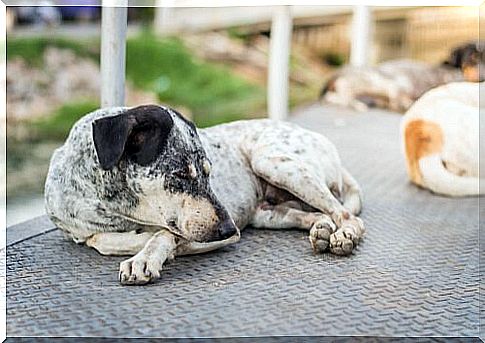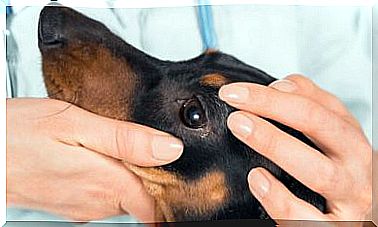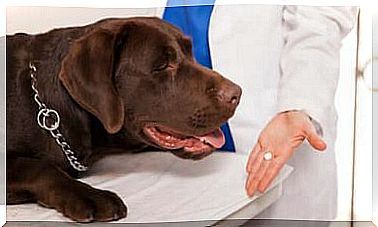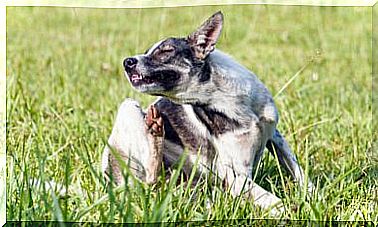How Do You Know If Your Dog Has Scabies?

Scabies – also called mange – can be very uncomfortable for our dog. The constant itching can cause it to damage its skin and even create lesions.
If you want to find out how to recognize scabies in a dog and what to do about it, by all means read on.
What is the scabies in dogs?
Mange is a disease that affects the skin of animals. It is caused by small mites that nest under the skin and in the fur of the animal.
Once they have made themselves comfortable there, their life cycle begins, which also includes reproduction.
They lay eggs from which more mites hatch. They too find a home in the skin of our dog and lay further eggs there until something is done about them.
These mites are parasites that feed on our dog’s skin and fur. That is why our fur nose suffers from a battered-looking appearance within a short time.
Actually, the mites always live with our pets. However, if the four-legged friend’s immune system is strong enough, it will keep them in check.
Problems arise when the immune system is weakened and can not defend itself adequately against the parasites.

There are different types of mites and each of them triggers a different type of scabies with their own set of symptoms.
In the following we describe the most common ones.
Canine demodicosis
The parasites are elongated, like a microscopic worm, and enter through the hair follicles. If they multiply, they clog the follicles, which expand and the fur falls out.
Common mange
This disease is caused by a round parasite that settles in the skin and digs small tunnels in which it leaves both its feces and eggs.
Sarcoptic mange
Another parasite causes this type of scabies, which makes the skin extremely red.

How do you know if your dog has scabies?
As always, close observation is the first step towards identifying a problem. In the case of scabies, you should watch out for the following behaviors that indicate this condition.
itching
Scabies causes a terrible itch, which is why your dog will inevitably scratch certain parts of the body.
Usually mange occurs on the most fatty parts of the body. So if you notice your dog scratching their back, stomach, or ears all the time , this is a warning sign.
Because the itching is so severe, the dogs keep scratching themselves even while walking.
Loss of fur
The animal could potentially lose a great deal of fur, leading to bald patches. In the beginning this only happens in a few places, but later the problem spreads to the whole body.
Red stain
This could be a sign of sarcoptic mange.
Loss of appetite
If the animal is more nervous or apathetic than usual and also loses the desire for food, then this is a sign of mange.
Change in smell
If the mange is very advanced, the animal can smell quite unpleasant.
Treatment for dogs with mange
Scabies can cause serious problems in our animal. However, if it is diagnosed in good time, it can be treated without consequences.
In these cases, the vet usually prescribes macrocyclic lactones such as ivermectin, moxidectin or milbemycin oxime.
The animal is also given antibiotics and gels or shampoos, which help to remove the damaged skin.
Most vets will prescribe oclacitinib for the itching because corticosteroids may weaken the immune system and make the situation worse.
Stay calm. Mange looks bad, but there is a remedy and after a while the skin and fur of your four-legged friend will recover.









